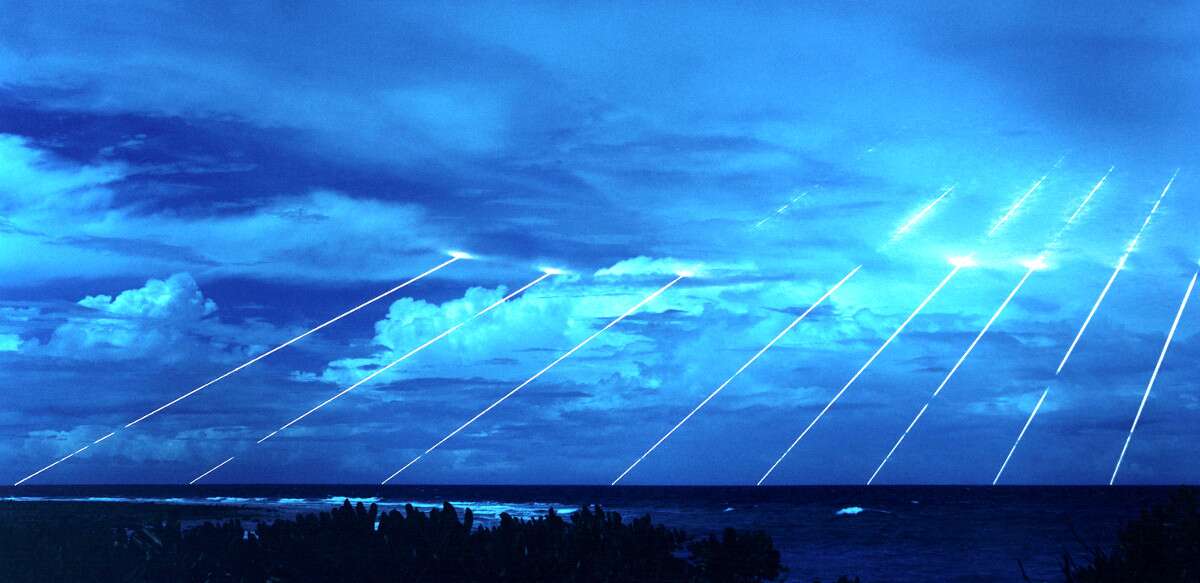Winston
Lorenzo von Matterhorn
- Joined
- Jan 31, 2009
- Messages
- 9,560
- Reaction score
- 1,749
They are apparently testing multiple independent post-boost vehicles (IPBV) instead of using a single multiple independently targetable reentry vehicle (MIRV) bus per ICBM. This allows warheads to modify their trajectory independently instead of being released from a single maneuverable MIRV bus.
Revealed: Russia's New Experimental ICBM Warheads
Russia pilots independent post-boost vehicles for more precise and flexible multiple warhead delivery.
https://thediplomat.com/2017/10/revealed-russias-new-experimental-icbm-warheads/
A Russian Defense Ministry official told the countrys state-run TASS news agency that the September 12 test involved an experimental detachable warhead design. The test was reportedly successful.
Multiple independently targetable reentry vehicle (MIRV) capable ICBMs normally feature whats known as a post-boost stage that can maneuver while outside the earths atmosphereafter the launch vehicles powered flight has concluded at high altitudesto dispense individual warheads to multiple targets at different approaches, allowing a single ICBM to strike targets separated by great distances.
The independent post-boost vehicle configuration tested by Russia is based on a similar concept, but would presumably allow for more complex and flexible targeting off a single ballistic missile in midcourse. Post-boost vehicles are not considered to be a separate missile stage as they do not generally enhance range; they can allow for more precise guidance and targeting.
Its unclear if the September 12 test also involved penetration aids and decoys, which could help the missile bypass existing U.S. ballistic missile defense systems.
Russia and China operate a range of MIRV-capable ballistic missiles. MIRVs generally allow for a most cost-efficient mode of nuclear targeting, given that the costs of manufacturing additional nuclear warheads and reentry vehicles is lower than the cost of manufacturing more ballistic missiles.
The United States only active ICBM, the Minuteman III, was designed to be capable of delivering three warheads to multiple targets, but the current missiles on alert feature a single high-yield warhead. The Trident II D5, the United States only submarine-launched ballistic missiles, features four to five warheads, though each can carry as many as eight.
Russia Tests Modified RS-24 Ballistic Missile With an "Experimental Warhead"
The so-called "independent post-boost vehicles" could be both more precise and difficult to shoot down.
https://www.thedrive.com/the-war-zo...allistic-missile-with-an-experimental-warhead
Though a MIRV-capable missile can release a number of individual nuclear weapons, theyre all attached to a single main unit that is flying on a relatively linear course. As such, the warheads can only hit targets in relatively close proximity to that path, which one can see in the still impressive photographs of these vehicles reentering the atmosphere during tests.
Peacekeeper ICBM reentry vehicles:

Video of RV arrivals at Kwajalein Atoll from a Minuteman III back when it carried three RVs:
https://youtu.be/PDL_pIPScSI?t=5m55s
With an IPBV setup, it is possible that the warheads will be able to chart a course that is much more independent of the main missiles trajectory, allowing a single ICBM to attack across a far wider area. It could also make for more precise targeting, since the vehicles would not be restricted to the same degree to a single flight path.
[video=youtube;lTVgJ8Sb34E]https://www.youtube.com/watch?time_continue=1&v=lTVgJ8Sb34E[/video]
Revealed: Russia's New Experimental ICBM Warheads
Russia pilots independent post-boost vehicles for more precise and flexible multiple warhead delivery.
https://thediplomat.com/2017/10/revealed-russias-new-experimental-icbm-warheads/
A Russian Defense Ministry official told the countrys state-run TASS news agency that the September 12 test involved an experimental detachable warhead design. The test was reportedly successful.
Multiple independently targetable reentry vehicle (MIRV) capable ICBMs normally feature whats known as a post-boost stage that can maneuver while outside the earths atmosphereafter the launch vehicles powered flight has concluded at high altitudesto dispense individual warheads to multiple targets at different approaches, allowing a single ICBM to strike targets separated by great distances.
The independent post-boost vehicle configuration tested by Russia is based on a similar concept, but would presumably allow for more complex and flexible targeting off a single ballistic missile in midcourse. Post-boost vehicles are not considered to be a separate missile stage as they do not generally enhance range; they can allow for more precise guidance and targeting.
Its unclear if the September 12 test also involved penetration aids and decoys, which could help the missile bypass existing U.S. ballistic missile defense systems.
Russia and China operate a range of MIRV-capable ballistic missiles. MIRVs generally allow for a most cost-efficient mode of nuclear targeting, given that the costs of manufacturing additional nuclear warheads and reentry vehicles is lower than the cost of manufacturing more ballistic missiles.
The United States only active ICBM, the Minuteman III, was designed to be capable of delivering three warheads to multiple targets, but the current missiles on alert feature a single high-yield warhead. The Trident II D5, the United States only submarine-launched ballistic missiles, features four to five warheads, though each can carry as many as eight.
Russia Tests Modified RS-24 Ballistic Missile With an "Experimental Warhead"
The so-called "independent post-boost vehicles" could be both more precise and difficult to shoot down.
https://www.thedrive.com/the-war-zo...allistic-missile-with-an-experimental-warhead
Though a MIRV-capable missile can release a number of individual nuclear weapons, theyre all attached to a single main unit that is flying on a relatively linear course. As such, the warheads can only hit targets in relatively close proximity to that path, which one can see in the still impressive photographs of these vehicles reentering the atmosphere during tests.
Peacekeeper ICBM reentry vehicles:
Video of RV arrivals at Kwajalein Atoll from a Minuteman III back when it carried three RVs:
https://youtu.be/PDL_pIPScSI?t=5m55s
With an IPBV setup, it is possible that the warheads will be able to chart a course that is much more independent of the main missiles trajectory, allowing a single ICBM to attack across a far wider area. It could also make for more precise targeting, since the vehicles would not be restricted to the same degree to a single flight path.
[video=youtube;lTVgJ8Sb34E]https://www.youtube.com/watch?time_continue=1&v=lTVgJ8Sb34E[/video]


